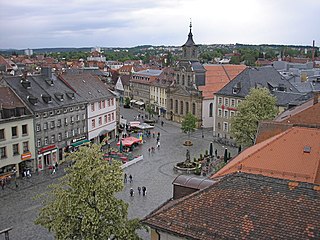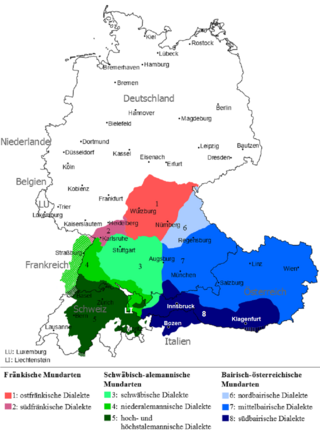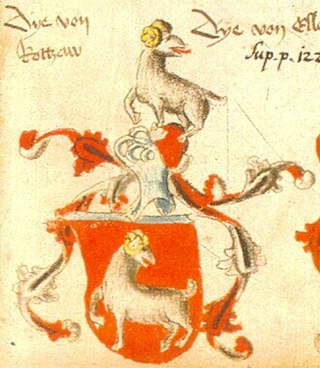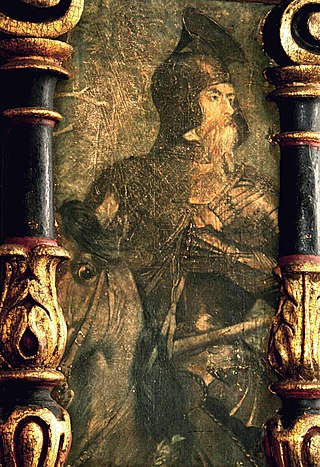This article relies largely or entirely on a single source .(February 2017) |

The Gravenreuth family was an old German noble family, originally from Franconia, whose members held significant positions in Prussia and later in the German Empire.
This article relies largely or entirely on a single source .(February 2017) |

The Gravenreuth family was an old German noble family, originally from Franconia, whose members held significant positions in Prussia and later in the German Empire.
The family's origin seat was located in Grafenreuth, now part of Thiersheim in the District of Wunsiedel in Upper Franconia, first mentioned in 1180. Up to the 18th century, the family, awarded with the title Baron, was the owner of nearby land and villages, e.g. in the area of Marktredwitz. Lines of the family moved to Upper Palatinate, e.g. in Schlammersdorf. The family is directly related with the House of Sparneck.
In the fellowship of the Margraves of Brandenburg-Bayreuth, members of the family were part of the Order of the Red Eagle and engaged in St Georgen under that with the foundation of the Gravenreuther Stift by Georg Christoph of Gravenreuth (1667-1736), offering a home and a religious life-style for poor unmarried older men. In 1825 the Guttenthau line of family was awarded with the title of Count (German: Grafen). This line of the family went extinct in 1919. In 1816 the Hofmark Affing was bought, members of the family are still living there. [1]

Franconia is a region of Germany, characterised by its culture and East Franconian dialect . Franconia is made up of the three Regierungsbezirke of Lower, Middle and Upper Franconia in Bavaria, the adjacent, Franconian-speaking, South Thuringia, south of the Thuringian Forest—which constitutes the language boundary between Franconian and Thuringian—and the eastern parts of Heilbronn-Franconia in Baden-Württemberg.

Bayreuth is a town in northern Bavaria, Germany, on the Red Main river in a valley between the Franconian Jura and the Fichtel Mountains. The town's roots date back to 1194. In the 21st century, it is the capital of Upper Franconia and has a population of 72,148 (2015). It hosts the annual Bayreuth Festival, at which performances of operas by the 19th-century German composer Richard Wagner are presented.

The Saale, also known as the Saxon Saale and Thuringian Saale, is a river in Germany and a left-bank tributary of the Elbe. It is not to be confused with the smaller Franconian Saale, a right-bank tributary of the Main, or the Saale in Lower Saxony, a tributary of the Leine.

Franz Bonaventura Adalbert Maria Herzog von Bayern, commonly known by the courtesy title Duke of Bavaria, is the head of the House of Wittelsbach, the former ruling family of the Kingdom of Bavaria. His great-grandfather King Ludwig III was the last ruling monarch of Bavaria, being deposed in 1918.

East Franconian or Mainfränkisch, usually referred to as Franconian in German, is a dialect which is spoken in Franconia, the northern part of the federal state of Bavaria and other areas in Germany around Nuremberg, Bamberg, Coburg, Würzburg, Hof, Bayreuth, Meiningen, Bad Mergentheim, and Crailsheim. The major subgroups are Unterostfränkisch, Oberostfränkisch and Südostfränkisch.

The Kingdom of Bavaria was a German state that succeeded the former Electorate of Bavaria in 1806 and continued to exist until 1918. With the unification of Germany into the German Empire in 1871, the kingdom became a federated state of the new empire and was second in size, power, and wealth only to the leading state, the Kingdom of Prussia.

The House of Bibra was one of the leading Uradel families in Franconia and present day Thuringia from the mid-15th century to about 1600. Later on the family rose from Reichsritter to Reichsfreiherr. After the Holy Roman Empire dissolved, they were made ‘’Freiherr’‘ (Barons) of Bavaria and Bohemia.

The House of Henneberg was a medieval German comital family (Grafen) which from the 11th century onwards held large territories in the Duchy of Franconia. Their county was raised to a princely county in 1310.

Sparneck is a municipality in Upper Franconia in the district of Hof in Bavaria in Germany.

The Künsberg family was an old German noble family of knights from the Franconian Forest and Upper Franconia.

The House of Reitzenstein is an old German noble family of Franconian knightly origin. It belonged to the Franconian Uradel.

The Waldsteinburg, also called the Red Castle is a ruined castle on the summit of the Großer Waldstein in the Fichtel Mountains of Germany. It is also known as the Westburg to distinguish it from the older ruins of the Ostburg.

The Sparneck family was an old German noble family from Franconia.
Hans Thomas von Absberg was a Frankish knight of the Absberg family, known as a robber baron.

The House of Kotzau was an old minor German noble family in Franconia, Germany.

The Notthafft family was an old German noble family.

The Franconian Rake is the name given to the coat of arms of the region of Franconia in Germany. It is described heraldically as per fess dancetty of three points gules and argent. The points represent a stylised heraldic rake.

The Franconian War was waged in 1523 when the Swabian League attacked several robber baron castles in Franconia, whose nobles were supporters of Hans Thomas of Absberg in the Absberg Feud.

The House of Egloffstein is an ancient Franconian aristocratic family (Uradel) with an eponymous family home in the hill region of Franconian Switzerland in the Bavarian province of Upper Franconia. The family first appears in the records in 1187 with a Heinrich genannt Stuchs who is also the progenitor. The house belongs to the brotherhood of Franconian Imperial Knights. Egloffstein Castle and Kunreuth Castle are to this day owned by the family.

The Schmitt family or von Schmitt is a Bavarian noble family with Franconian origin. Introduced to nobility as Ritter von Schmitt by Luitpold, Prince Regent of Bavaria and Otto, King of Bavaria, the family has been prominent in business, law and politics. Members have included the 14th President of Upper Franconia, the President of the Supreme Court of the Kingdom of Bavaria, and the Senate President of the Reichsgericht.